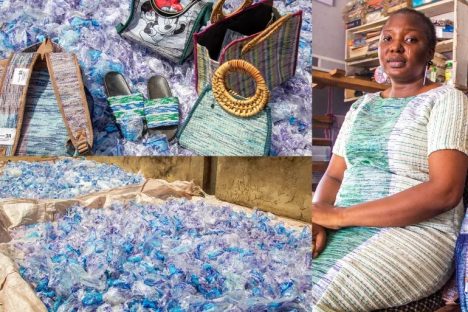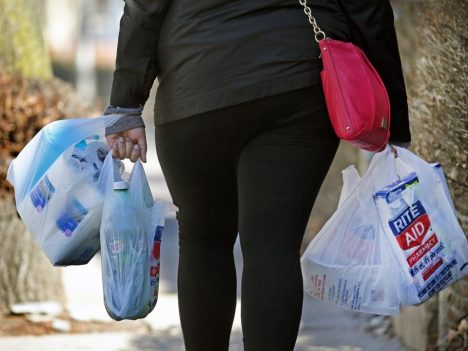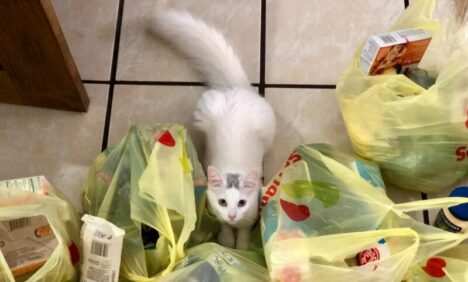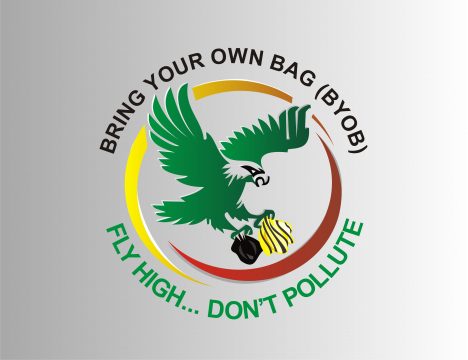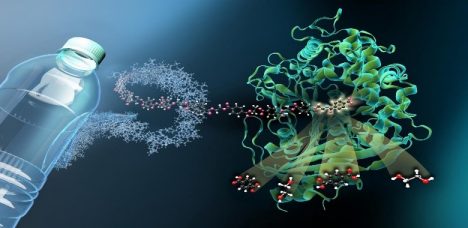All posts by Admin
- 01 Jun, 23
- by Admin
- in BYOB Campaign
-
 0
0
-

 0
0
The world is in a struggle with plastic. It can’t seem to do without it and definitely can’t live with it. It litters the landscape, cloaks the drains and gutters and fills the canals, rivers and oceans. The UN says ‘the world is choking on plastic’ and National Geographic says ‘the world is drowning in plastic’.
Plastic is in almost everything. It is nearly everywhere. It is the true definition of ubiquitous. Experts concede that plastic waste is one of the major challenges to the environment and human existence. Indeed, plastics hold the world in a vice-like grip. It is impossible to escape plastic. Plastic waste is a plague.
The Principles for Responsible Investment in its 2019 report “The Plastics Landscape: The Challenges and Possible Solutions” asserts that across the globe plastic production and consumption are on the rise. And with less than 20 per cent of plastics recycled globally, it is no surprise that plastic waste is becoming more prevalent.
Another factor here is that 40 per cent of global plastics production is for packaging and 95 per cent is single-use. So, growth in production and consumption pattern along with an inefficient waste management system continues to precipitate an increasing volume of plastic waste.
Lagos alone generates 9000 metric tons of waste daily; 86% of the waste generated consists of plastic bottles and bags according to The Lagos State Waste Management Authority.
The real problem with plastic is that it does not break down naturally. The very properties that led to the rise in the adoption of plastics (durability, low density and non-degradability) are precisely why they are today an environmental nightmare.
To tackle the threat of plastic overwhelming the world every hand has to be on board. The public, as well as private, sectors, must be involved and necessarily be willing to work together. Plastics may be an environmental challenge, but they are equally a path to immense opportunities. Plastics can be a source of a great number of jobs and they are reused as raw materials for the production of other goods. Think of the circular economy: design, reuse, repair and recycling.
The Minister of Environment, Barr. Mohammed Abdullahi while speaking in Abuja at the inaugural meeting of the project steering committee for the plastic circular economy project, lamented that “only 45 per cent of waste in Nigeria are collected, 80 per cent of plastic waste goes to dump site while only 10 per cent is recycled.” The statistics are worrying. Suffice it to say that Nigeria has no efficient waste management system in place. Plastics are a menace.
At the core of the plastic menace are PET bottles, or polyethene terephthalate bottles. PET bottles pose a significant environmental threat due to their non-biodegradable nature. When they end up in landfills or oceans, they can take hundreds of years to decompose and release harmful chemicals into the environment. Additionally, discarded PET bottles can cause harm to wildlife, with many marine animals consuming them, leading to serious health consequences. The scale of the issue is significant, with billions of PET bottles produced annually, and only a fraction of them being recycled or properly disposed of.
To address the issue of plastic waste, we must explore how to tackle the proper disposal of PET bottles.
To make a meaningful impact in addressing the issue of PET bottles, collaborative efforts are needed from bottlers, governments, and NGOs. In the fight for a sustainable future, collaboration is indispensable.
Firstly, bottlers can collaborate with governments and NGOs to support initiatives aimed at reducing plastic waste, such as awareness campaigns, recycling infrastructure improvements, and the promotion of reusable bottles.
Secondly, governments can work with bottlers and NGOs to establish policies and regulations that promote sustainable packaging practices and support research and innovation in alternative packaging materials and recycling technologies.
Thirdly, NGOs can play a critical role in raising awareness of the issue and promoting behavioural change among consumers. NGOs can work with governments and bottlers to support initiatives aimed at reducing plastic waste, including education and awareness campaigns.
Without active and sustained collaborative efforts the battle to curb PET doesn’t stand a chance.
Specifically, while several potential solutions can be explored to curb the menace of plastic (PET) waste, four of them can be implemented immediately:
Firstly, promote the use of reusable bottles, such as stainless steel or glass bottles. They can be used multiple times and do not contribute to plastic waste. This can be done through education and awareness campaigns, or by incentivizing the use of reusable bottles through discounts or other incentives.
Secondly, improve recycling infrastructure. This may include setting up more recycling centres, implementing effective collection systems, and creating markets for recycled PET. This can ensure that more PET bottles are recycled into new products, reducing the amount that ends up in the environment. Governments at the state and local levels must take the lead here.
Thirdly, governments can implement a bottle deposit system. Under this system, consumers pay a small fee when purchasing bottled drinks and receive a refund when returning the empty bottle. This system can incentivize consumers to return bottles for recycling, reducing the amount of waste that ends up in the environment. Bottlers must champion this and work actively with relevant government agencies.
Fourthly, bottlers of drinks can explore the use of biodegradable alternatives to PET bottles. Here we are talking about plant-based materials that can decompose naturally in the environment. Additionally, bottlers can reduce the amount of packaging used, and support recycling efforts.
There is no one size fits all solution to the problem of plastic (PET) waste management. Every option must be explored; every solution considered.
But more importantly, collaboration must be the watchword. In collaborating to tackle the menace of plastic pollution, we are engaged in a collective struggle for a sustainable future.
SOURCE: THIS DAY- Elvis Eromosele, Lagos
- 15 May, 23
- by Admin
- in Youth Awareness
-
 0
0
-

 0
0
Adejoke Lasisi turns discarded sachets of drinking water into art by using them to weave attractive items including clothes, slippers, bags and mats. Nylon water sachets are a major pollutant where she lives in Ibadan, frequently found clogging up drains and littering the streets. Adejoke Lasisi, who is in her early 30s, is from a traditional, middle-class weaving family in Ibadan. Aged nine, she started weaving the popular aso-òfì, a material made from cotton threads, traditionally woven by Yorùbá people.
Now, she has turned her craft into a way to relieve her home city of some of its waste burden. In Nigeria, discarded “pure water” sachets – small, rectangular sachets of drinking water made from nylon – are a common sight on roads and in gutters. “I began to pick them up,” she says. “I also began to think of what I could do with them
“People were always complaining about the pure water nylon sachets everywhere. I worked out that it would be great to make these nylon sachets into colourful clothing.”
She has now perfected the art of blending weaving wool with nylon. Doing this involves a five-step process before the sachets are transformed into attractive products such as bags, purses, slippers, mats, artwork and more.
First, Lasisi sources the nylon – picking up sachets from the streets and receiving discarded, imperfect sachets from water processing plants. She says the nylon used to make pure water sachets has two advantages: It is the right texture for weaving and is largely a neutral colour, meaning it is easy to dye.
“After sorting, we wash the material thoroughly and disinfect it, after which we dry it in the sun. The whole process takes three days. Once dried, we shred the material with scissors into thread-like strands. Then, we can begin to weave them on the loom.”
One of her most popular products is a school bag which is made from 10 percent òfì and 90 percent nylon and recycles 250 water sachets in the process.
Since Lasisi started Planet3R, her for-profit business, in 2020, she has also partnered with different organisations and won several grants in Nigeria and overseas to train young people in the art.
“I hope that other young people will be able to save the environment with their hands too. The more wastepreneurs we have, the cleaner our environment becomes.”
SOURCE: AL JAZEERA
- 17 Nov, 21
- by Admin
- in Uncategorized
-
 0
0
-

 0
0
If we are to build a greener, fairer and more equal society in the wake of COVID-19, it’s time for rich countries to end their practice of dumping plastic waste in developing countries. This not only harms the environment but disproportionately affects the women and girls who tend to clear it up.
The problem was made worse for many developing countries when China announced its refusal to accept other countries’ plastic waste in 2018. The result has been an increase in plastic waste exports to Africa, much of which is proving hard to recycle and is ending up in rivers and oceans.
On top of this, the pandemic is generating ever-increasing amounts of plastic waste, especially single-use items like medical gloves and disposable masks. In some areas of Africa – where around 411 million face masks are discarded every day – lack of plastic waste management infrastructure and weak regulations around dumping waste mean the situation is only getting worse.
Now, countries like Ghana, Uganda, Tanzania, Ethiopia, Senegal and Kenya are finding themselves flooded with plastic waste. This is overwhelmingly affecting poor, socially marginalised people, and women in particular.
Unfair trade
Although plastic waste can be seen as a trade between developed and developing countries, which allows the latter to be paid in exchange for dealing with that waste, this trade isn’t an equal one.
Developing countries are likely to accept plastic waste from developed countries because it offers another potential source of income for their population living below the poverty line. It’s projected that 27 million to 40 million people in sub-Saharan Africa will fall into extreme poverty during 2021. It’s no wonder that such regions see plastic waste as a lucrative source of opportunity which can contribute to easing poverty.
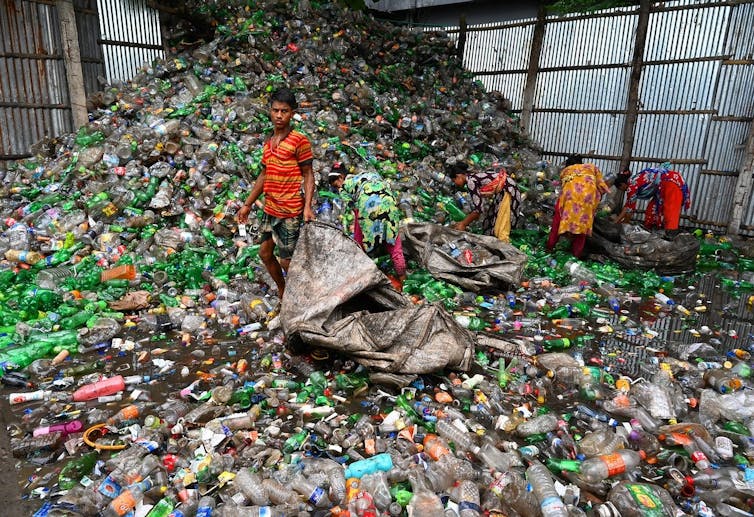
However, the amounts paid to waste pickers – usually women – by private waste collecting companies barely make a dent in pickers’ financial needs. Payments of less than 4 pence a kilogram for collecting plastic bottles for recycling are normal.
And that waste sometimes ends up burned, rather than being recycled. In 2020, 40% of the UK’s plastic waste was sent to Turkey, where instead of being recycled some of it was illegally dumped and burned. Research in 2019 suggested that the equivalent of a double-decker bus full of plastic ends up dumped or burned every second.
Health and security
Many plastics contain toxic chemicals that can enter the environment if products are discarded or burnt. This includes substances that have been linked to miscarriages and cancer.
Picking plastic waste not only doesn’t pay well, it also comes at a price in terms of health and security. Dumped waste can contain hazardous materials like broken glass and syringes carrying infectious illnesses. Plus, women are often forced to collect plastic from the outskirts of cities: places likely to have higher rates of crime.
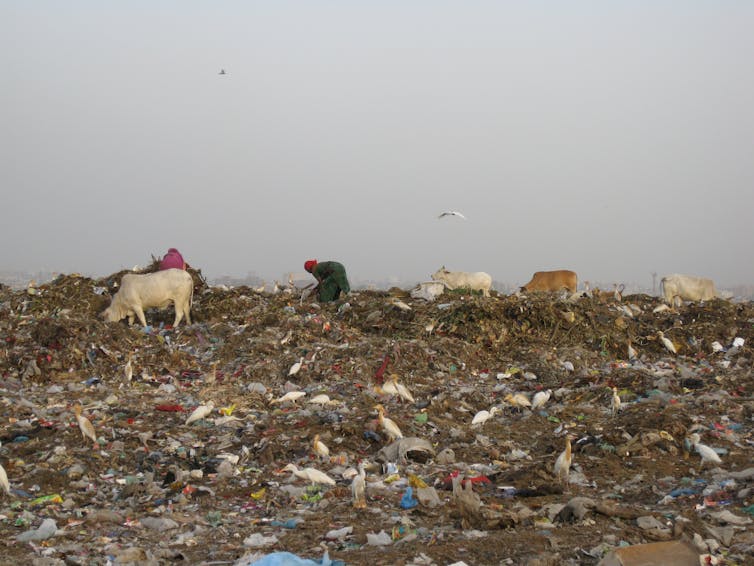
Most, however, don’t have a choice: they must risk their safety to make a living and provide for their families, due to widespread lack of education for women and girls. Across Africa, 3 million more girls than boys between six to 11 years of age will not be offered the opportunity to attend school. The impacts of this ripple into their future, making it far less likely for women to find well-paying jobs and forcing many to resort to low-paid, dangerous work.
Many poorer women in African countries also reside in informal settlements, where waste easily accumulates due to poor rubbish collection services. Accumulating plastic can damage inadequate water drainage systems, resulting in flourishing colonies of dangerous bacteria. For example, Zambia has experienced several cholera outbreaks due to poor drainage worsened in part by plastic-clogged systems.
Justice
It’s imperative to find ways of improving women’s situations in developing countries if we are to realise a truly greener, fairer and more equal world.
Some next steps to consider – if such a world is to become a reality – would include developing countries creating more stringent legislation against dumping plastic, increasing women’s education and involving more women in decision-making processes around how to deal with plastic waste.
What’s more, creating social incentives for reducing plastic waste – for example, by paying pickers more – is key in societies where social status is attached to those who can afford bottled plastic water and removed from those who then must pick up their litter.
Community-based awareness programmes promoting the importance of plastic waste management – run via community clubs, social platforms like Facebook and Instagram, or local radio stations – could help achieve this.
If picking plastic waste became better paid, this kind of cultural shift would not only help to empower women pickers economically but may be able to eliminate stigma attached to picking. With a resulting influx of formalised training courses, policies to keep pickers safe and opportunities for pickers to speak out about the issues attached to their work, many others will hopefully be attracted to help keep their local environments clean and safe.
- 22 Jul, 21
- by Admin
- in Uncategorized
-
 0
0
-

 0
0
The waste plastic deluge fouling the world’s beaches could be more than just an eyesore. It could be a toxic timebomb.
LONDON, 8 July, 2021 − European researchers have warned that the wave of pollution engulfing the globe could be nearing a tipping point. The waste plastic deluge could become an irreversible crisis.
Somewhere between 9 and 23 million tonnes of polymers get into the rivers, lakes and seas of the world every year. Even more may be getting into the terrestrial soils and by 2025 − unless the world changes its ways − these levels of pollution will have doubled.
And, the researchers warn, the uncertain and as yet unknown effects of weathering on such volumes of plastic could bring what has been called “a global toxicity debt” as drinking bottles, bits of fishing gear, coffee cups and carrier bags become covered with microbial life; as plastic particles foul the sea’s surface, become suspended in the water column, and build up in the sediments of the ocean.
Plastic waste has now been found everywhere: on the world’s highest mountains, in the deepest oceanic trenches, on the beaches of desolate islands in the Southern Ocean, in the Arctic ice, and in the tissues of living creatures, from seabirds to whales.
Worsening climate crisis
“Right now we are loading up the environment with increasing amounts of poorly reversible plastic pollution. So far we don’t see widespread evidence of bad consequences but if weathering plastic triggers a really bad effect we are not likely to be able to reverse it,” said Matthew Macleod of Stockholm University in Sweden.
“The cost of ignoring the accumulation of persistent plastic pollution in the environment could be enormous. The rational thing to do is act as quickly as we can to reduce emissions of plastic into the environment.”
Professor Macleod and colleagues warn in the journal Science that alongside threats to wildlife, and the potential hazard of environmental poisoning, there could be a number of other hypothetical consequences.
Plastic pollutants could exacerbate climate change by disrupting the traffic of carbon between the natural world and the atmosphere, and they could heighten biodiversity loss in the already over-fished oceans.
Researchers do not yet know of the long-term non-toxicological effects of plastic pollution on carbon and nutrient cycles, soil and sediment fertility, and biodiversity. Nor has there been any assessment of the potential for delayed toxic effects as the plastic polymers are altered by weathering.
“The rational thing to do is act as quickly as we can to reduce emissions of plastic into the environment”
And if there are such effects, then they could persist, to trigger what the scientists call a “tipping point”, long after people have stopped discarding plastic waste into the environment.
“The world promotes technological solutions for recycling and to remove plastic from the environment. As consumers, we believe that when we properly separate our plastic trash, all of it will magically be recycled,” said Mine Tekman, of the Alfred Wegener Institute in Germany, and a co-author.
“Technologically, recycling of plastic has many limitations, and countries that have good infrastructures have been exporting their plastic waste to countries with worse facilities. Reducing emissions requires drastic actions, like capping the production of virgin plastic to increase the value of recycled plastic, and banning the export of plastic waste unless it is to a country with better recycling.”
And her colleague Annika Jahnke of the Helmholtz Centre for Environmental Research in Germany warned: “In remote environments, plastic debris cannot be removed by cleanups, and weathering of large plastic items will inevitably result in the generation of large numbers of micro- and nano-plastic particles as well as leaching of chemicals that were intentionally added to the plastic and other chemicals that break off the plastic polymer backbone.
“So, plastic in the environment is a constantly moving target of increasing complexity and mobility. Where it accumulates and what effects it may cause are challenging or maybe even impossible to predict.” − Climate News Network
- 09 Mar, 21
- by Admin
- in Uncategorized
-
 0
0
-

 0
0
Nzambi Matee is an entrepreneur with an incredible goal — to turn plastic destined for the landfill into sustainable, strong building material. Her company, Gjenge Makers, uses the plastic waste of commercial facilities to create bricks that can withstand twice the weight threshold of concrete.
Gjenge Makers is based in Nairobi, Kenya, where plastic waste pollution has become a severe problem. A study supported by the National Environmental Management Agency (NEMA) found that more than 50% of cattle near urban areas in Kenya had plastic in their stomachs. To combat this issue, the Kenyan government outlawed the use of plastic bags in 2017, and imposed a ban on all single-use plastic in protected natural areas last year. However, these bans only address the issue of consumer single-use plastic. Commercial waste is still a deep-seated problem within the country.
Nzambi Matee told reporters she was “tired of being on the sidelines,” and decided to create a solution of her own for commercial plastic waste. With a career in materials engineering, she was able to design a brick made of recycled plastic and sand, compressed and heated to create a strong and sustainable alternative to concrete. The fibrous structure of the plastic makes it not only more lightweight but also less brittle than concrete.
“Our product is almost five to seven times stronger than concrete,” Matee told Reuters about the current line of Gjenge Makers pavers and bricks. While she purchases some plastic from recycling companies, she also receives free shipments of plastic waste from local packaging factories. Currently, the Gjenge Makers factory can produce up to 1,500 bricks each day, according to Reuters.
The company offers pavers for residential and commercial uses. The heavy-duty 60 mm paver is strong enough to be used for parking lots and roads, while the 30 mm light-duty paver can be used for household patios and walkways. The light-duty paver is twice the strength of concrete and comes in a variety of colors.
The factory is only in its beginning stages, but it has already recycled 20 tons of plastic since 2017 and created 120 jobs in Nairobi. In addition, Gjenge bricks are also one of the more affordable options on the market. They cost approximately $7.70 per square meter, as opposed to $98 per square yard for concrete produced in the U.S.
However, it hasn’t been an easy road. Matee says about the founding of her company, “I jumped in, off a cliff without even a parachute. I was building it as I was falling down. But isn’t that how great things are done?”
With entrepreneurs like Matee, there is a beacon of hope for the worldwide plastic pollution crisis. To learn more about Gjenge Makers process and impact, you can visit their website or YouTube channel. Or, read this to learn more about ways you can help fight against plastic pollution in your community.
- 29 Sep, 20
- by Admin
- in Uncategorized
-
 0
0
-

 0
0
New Jersey is one step closer to passing what environmental advocates say is the strongest anti-plastic legislation in the nation.
The state Legislature passed a sweeping measure Thursday that would ban plastic bags from stores and restaurants and single-use food and drink containers made from polystyrene foam, The New York Times reported. The ban is noteworthy for being the first in the country to include supermarket paper bags as well as plastic ones.
“This is the single most comprehensive plastics and paper reduction bill in the nation,” former U.S. Environmental Protection Agency (EPA) Regional Administrator and Beyond Plastics President Judith Enck said in a statement published by Insider NJ. “Building on the success of local laws adopted throughout New Jersey to reduce plastic pollution, the NJ State Legislature listened to the people and not the polluters and embraced a sensible environmental strategy.”
The bill now passes to Gov. Philip Murphy, who intends to sign it, a spokesperson told The New York Times. The bans on bags and containers will go into effect 18 months after he does so, NorthJersey.com reported.
In addition to banning plastic and paper bags and plastic food containers, the bill will also limit plastic straws in restaurants so that they will only be available upon request. There are exemptions for newspaper bags; bags used for loose produce, fish or meat; dry-cleaning bags and prescription drug bags.
The measure effectively settles a long-running debate about whether plastic or paper bags are worse for the environment by banning both. Plastic bags account for about 12 percent of U.S. plastic pollution, according to The New York Times. But paper bags need more energy, and therefore more climate pollution, to make. New Jersey Sierra Club Director Jeff Tittle said the new legislation would encourage people to use more sustainable, reusable shopping bags.
However, the ban on paper bags was also the key to getting an important supermarket trade group to support the bill, NorthJersey.com reported. The organization argued that it would cost stores too much to supply customers with only paper bags.
“The ban on paper bags is critically important to the success of this legislation,” New Jersey Food Council President Linda Doherty said ahead of Thursday’s vote. “Without a ban, consumers will simply move to paper single-use bags and we will not address the underlying goal of reducing our reliance on single-use products.”
However, the food council originally opposed any sort of statewide bag ban, NJ Spotlight News reported. It changed its position after as many as 57 communities passed their own separate bans and it decided it would be easier to deal with a single, statewide law than a patchwork of local ones.
Not everyone has been persuaded, however. American Forest and Paper Association President and Chief Executive Heidi Brock said the bill unfairly targeted her industry.
“The New Jersey Legislature has undermined an environmentally responsible option for consumers,” she said in a statement reported by The New York Times. “Furthermore, the ban on paper bags sends an alarming message in devaluing family wage jobs, which are often union labor, in addition to the indirect jobs supported by the paper and wood products industry in the state.”
Republican Assemblywoman Holly Schepisi, meanwhile, argued that the bill would put an additional burden on a restaurant industry already struggling because of the coronavirus pandemic.
“We’re essentially kicking them in the head,” she said, as NJ Spotlight News reported.
On the other hand, environmental advocates argued that plastic has long polluted New Jersey waterways. In recent years, more than 80 percent of the litter gathered on beaches by Clean Ocean Action from Cape May to Sandy Hook has been plastic, NorthJersey.com reported. The material has even been found in some of the state’s most pristine rivers and creeks.
“Now, we can all look forward to picking up less trash on our beaches,” Clean Ocean Action executive director Cindy Zipf told NorthJersey.com. “There will be less plastics in the ocean to cause harm and death to marine life.”
- 29 Sep, 20
- by Admin
- in BYOB Campaign
-
 0
0
-

 0
0
Do you know that plastic waste is a type of waste that takes
hundreds of years to degrade in a landfill? Have you calculated
how many you have used and disposed in the last 1-2 years?
The dangers of continuous use of plastics without recycling are
enormous. They get into soil and slowly release toxic chemicals that
harm the food chain. When they find their way into rivers and oceans,
some marine animals that eat them often choke and die, while others get
toxic substances released into their bodies. When eaten by humans, they
lead to health challenges.
It’s time to wake up and save our environment from the dangers of
plastic pollution!
- 18 May, 20
- by Admin
- in Youth Awareness
-
 0
0
-

 0
0
1.3 billion plastic bottles are sold daily around the world. And that’s just the tip of the fossil-based plastic iceberg. Plastic preserves our food. It’s in the nylon and polyester we wear, and it protects medical staff from the coronavirus.
Petroleum based plastics dominate the market because they’re durable, light-weight and cheap, but most of them can’t be recycled or reused.
Of the 6.3 billion tons of plastic waste produced between 1950 and 2015, only 9% were recycled The rest of it ended up in landfills, was incinerated or, all too often, landed in the ocean .
A raft of new bioplastic innovations is starting to catch up, though. And, unlike unsustainable fossil fuels, they are derived from renewable sources.
While bioplastics have the same molecular structure as petroleum-based plastics, which take hundreds of years to decompose, research shows that biomass-based polymers are also more likely to biodegrade and break down, including in industrial compost facilities. Bioplastic proponents believe they are key to making plastic part of a circular economy.
Here’s a look at five ingredients that could make bioplastics competitive with traditional plastics.
1. Olive Pits
Countries that produce a lot of olive oil have a byproduct that can be used for plastic: olive pits. A Turkish startup called Biolive began creating a range of began creating a range of bioplastic granules created from olive seeds that result in bio-based, partially biodegradable products that can decompose in a year.
The active ingredient oleuropein found in olive seeds is an antioxidant that extends the life of the bioplastic while also hastening composting of the material into fertilizer within a year.
And since Biolive’s granules act like fossil fuel-based plastics, plastic producers can simply substitute the conventional granules without disrupting the production cycle for industrial products and food packaging.
Biolive claims that by utilizing olive oil waste, production costs are reduced by up to 90% in relation to some existing bioplastics. This is important says founder Duygu Yilmaz, since starch-based bioplastics made from corn are often more expensive than petroleum-based plastics are therefore not a viable alternative.
In 2019, award-winning Biolive was chosen to represent Turkey at the United Nations Development Programme.
2. Sunflower Hulls
Like olive seeds, the husks of sunflower seeds used for oil production is a waste product also being used to created bioplastics. And luckily, they’re in near endless supply.
The German start-up Golden Compound has created a unique Sustainable Sunflower Plastic Compound bioplastic – referred to as S²PC. It’s reinforced with sunflower hulls, which they claim are 100% recyclable.
The S²PC bioplastic is being moulded into everything from office furniture to recyclable transport and storage boxes and crates.
Golden Compound also produces a “green” bioplastic that is 100% biodegradable, GMO-free and can be fully composted at home. Products include award-winning, world-first biodegradable coffee capsules, plant pots and coffee mugs.
The German start-up attributes the success of its bioplastics to performance. “In the end, the only reason people will be willing to switch, is if it works,” Marcel Dartée, General Manager at Golden Compound, told the Plastic Today trade publication.
3. Fish Waste and Algae
The growing attempt to transform organic waste into plastic now includes fish processing refuse.
A UK initiative called MarinaTex is using fish skin and scales – 500,000 tons of which are generated annually in the UK alone – bound with red algae to make a compostable plastic alternative that can replace single-use plastics such as bakery bags and sandwich packs.
MarinaTex claims the biopolymer creates stronger packaging than a conventional plastic bag — flying in the face of perceptions that bioplastics lack strength and durability.
Lucy Hughes, who created the product in her final year at the University of Sussex, says MarinaTex’s flexibility, strength and pliability was inspired by actual fish skin and scales.
“It kind of struck me that nature can make so much from so little, so why do we need to have hundreds of man-made polymers when nature has so many already available,” she told the World Economic Forum in November.
MarinaTex, which won the 2019 James Dyson Award worth €35,000, describes its product as home compostable and says it can break down within four to six weeks.
4. Plant Sugars
While PET is one of the most recyclable fossil-based plastics it takes hundreds of years to decompose. In response, Amsterdam-based Avantium has created a revolutionary “YXY” plants-to-plastics technology that converts plant-based sugars into a new biodegradable packaging material, polyethylene furanoate or PEF.
A trial of PEF biodegradability in the natural environment is showing promising signs.
“PEF degrades much faster than PET under industrial composting conditions,” Caroline van Reedt Dortland, Director Communications at Avantium, told DW. Degrading in 250-400 days as opposed to 300-500 years is significant.
It is used as a textile, film, and has the potential to become a major player in the packaging of soft drinks, water, alcoholic beverages and fruit juices, having already collaborated with the likes of Carlsberg to create a “100% bio-based” beer bottle.
According to Hasso Pogrell of European Bioplastics, it’s even possible to ” recycle PEF together with PET, and it makes the PET recyclate perform even better than the original PET.”
5. Mushrooms
Gadget blog Gizmodo wrote back in 2015 about resilient and biodegradable fungal mycelia-based materials which, unlike oil-based plastic, “create no toxic byproducts.”
One emerging brand utilizing fungi is Reishi, a sustainable, fine mycelium leather substitute created from a woven cellular microstructure derived from mushrooms. By emulating the collagen structure of animal leathers, Reishi fine mycelium is both sustainable and versatile.
Reishi creator MycoWorks has taken the water-resistant biomaterial to the next level, promising the performance, quality and aesthetics of leather or synthetic plastic materials, but with a negative carbon footprint.
Already utilized by a selection of European luxury and footwear brands, in late 2019 $17 million (€18 million) financing was raised to help deliver commercially viable non-plastic, non-animal Reishi materials to the market.
In terms of limiting fossil-based plastic consumption, the biomaterial aims to outperform existing “vegan leathers” that are created with unsustainable plastics.
- 06 Apr, 20
- by Admin
- in Uncategorized, Youth Awareness
-
 0
0
-

 0
0
German researchers have identified a strain of bacterium that not only breaks down toxic plastic, but also uses it as food to fuel the process, according to The Guardian

The scientists discovered the strain of bacteria, known as pseudomonas bacteria, at a dump site loaded with plastic waste , where they noticed that it was attacking polyurethane. Polyurethane’s are ubiquitous in plastic products because they are pliable and durable. However, when they reach the end of their usefulness and end up in landfills, they decompose slowly and slowly release toxic chemicals into the soil as they degrade. They are also notoriously difficult to recycle, according to Courthouse News.
Since it is so difficult to recycle, millions and millions of products containing polyurethane like sneakers, diapers, kitchen sponges and foam installation end up in landfills. Polyurethane usually kills most bacteria too, so it surprised the researchers to find a strain that not only survived, but also used polyurethane to thrive, according to The Guardian. The findings were published in the journal Frontiers in Microbiology.
“The bacteria can use these compounds as a sole source of carbon, nitrogen and energy,” Hermann J. Heipieper, a senior scientist at the Helmholtz Centre for Environmental Research-UFZ in Leipzig, Germany and co-author of the new paper, said in a statement. “These findings represent an important step in being able to reuse hard-to-recycle polyurethane products.”
Pseudomonas bacteria are part of a family of microorganisms known for its ability to withstand harsh conditions, such as high temperatures and acidic environments.
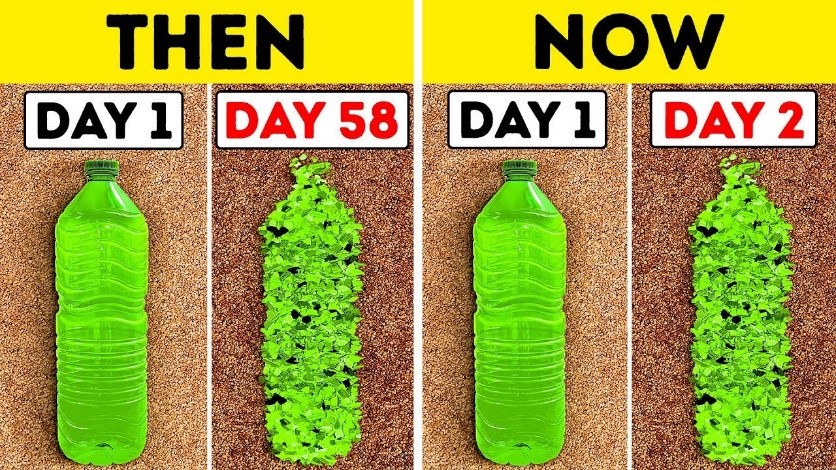
While the little germs offer hope for a solution to the plastic crisis polluting land and water around the globe, scientists are still a long way away from being able to use the bacteria on a large scale. Heipieper estimated that it could be 10 years before the bacteria are ready to consume plastic at a large scale. He added that in the meantime, it is important to reduce the use of non-recyclable plastic and to cut the amount of plastic used around the world, according to The Guardian.
Our reliance on plastic has created a waste crisis. In 2015, polyurethane products alone accounted for 3.5 million tons of the plastics produced in Europe, according to a press release from the journal that published the study. More than 8 billion metric tons of plastic has been produced since the 1950s, according to The Guardian, and a vast majority of it has polluted the world’s land and oceans, or ends up in landfills. Scientists say it threatens a “near permanent contamination of the natural environment.”
As for polyurethane, its heat resistance make it a difficult and energy intensive to melt down. Because of that, it is disproportionately tossed into landfills around the world where its slow degradation releases toxic — and often carcinogenic — chemicals, according to Courthouse News.
In the laboratory, the researchers fed key components of polyurethane to the bugs. “We found the bacteria can use these compounds as a sole source of carbon, nitrogen and energy,” Heipieper said, as The Guardian reported.

“When you have huge amounts of plastic in the environment, that means there is a lot of carbon and there will be evolution to use this as food,” Heipieper said as The Guardian reported.
“Bacteria are there in huge numbers and their evolution is very fast. However, this certainly doesn’t mean that the work of microbiologists can lead to a complete solution,” he added. “The main message should be to avoid plastic being released into the environment in the first place.”

